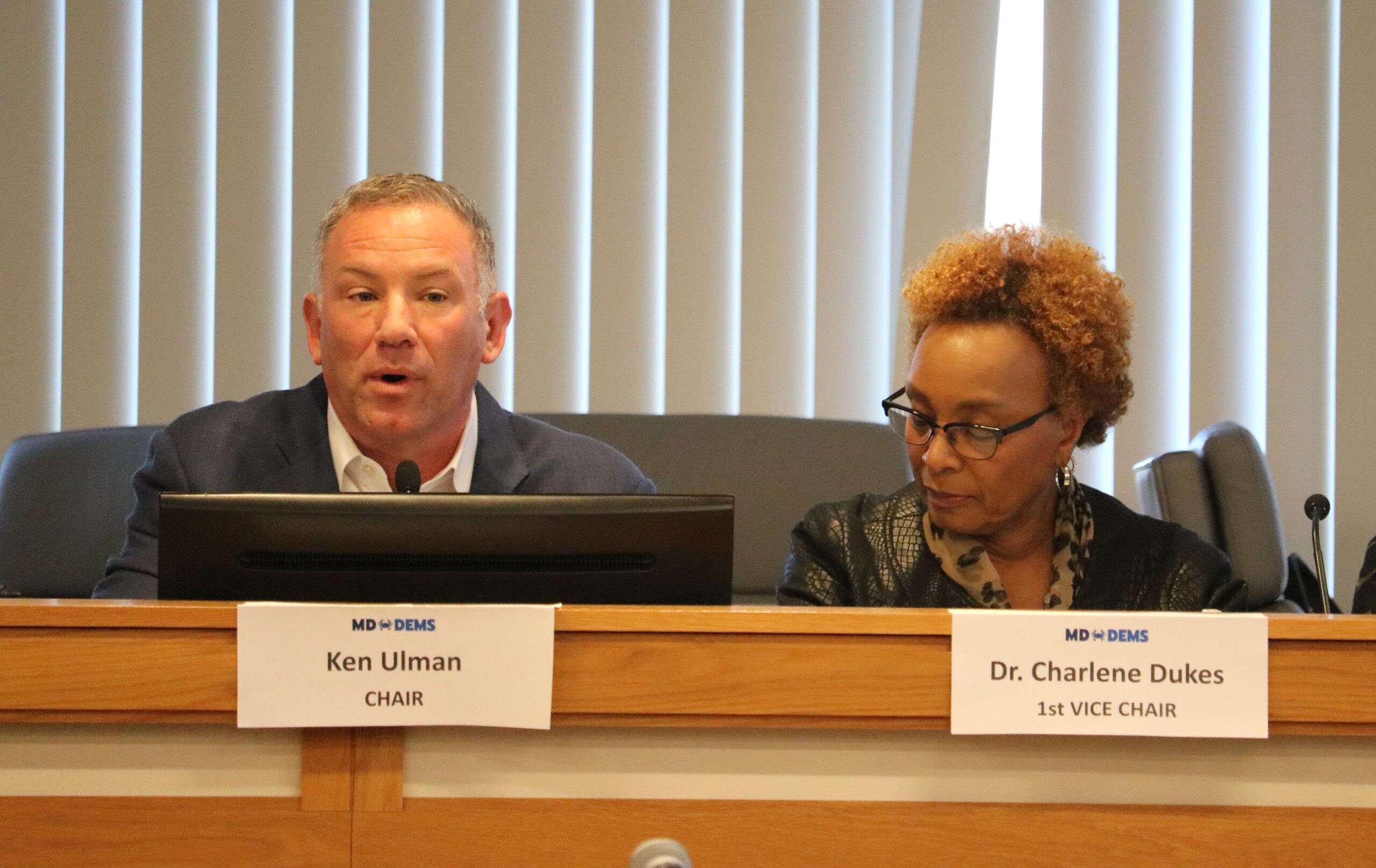As lawmakers prepare 2024 budget, structural deficit emerges from $478 million dip in revenue

Maryland appropriators warned Thursday that legislative ambitions in the first year of a new term under Democratic party rule in Annapolis might have to be constrained a bit after state revenue estimates came in lower than anticipated.
House Appropriations Chair Ben Barnes (D-Prince George’s) said lawmakers would have to work on a budget that accounts for a new projected structural deficit before considering passing new bills with new spending obligations.
Barnes’ comments came shortly after the state’s Board of Revenue Estimates released new figures estimating a $478 million revenue dip during the current and next fiscal year, for which lawmakers are expected to pass a budget by April 3.
Overall, the fiscal writedown equals about 1% of previously anticipated revenue.
The news was bad, but not altogether unexpected.
“This particular board has been warning of this day for quite some time,” said Treasurer Dereck E. Davis (D), a former legislator who joined the board when he took the treasurer’s post in late 2021. “We couldn’t finger-point where the revenue loss would be — all of this is an educated guess when you get down to it — but we’ve been predicting the need for belt-tightening and things of that nature for the entire 15 months I’ve been here.”
Davis, who sits on the panel with Comptroller Brooke Lierman (D) and Budget Secretary Helen Grady, added that the revenue news was tempered by a reaffirmation earlier in the week of the state’s Triple A bond rating. And, Davis added, taxpayers’ dollars were “in good hands” as the General Assembly and Gov. Wes Moore’s administration now get to work absorbing the loss in the budget.
Already included in Moore’s $63.1 billion budget as introduced in January were some cash cushions – a $500 million pay-ahead on the Blueprint for Maryland’s Future education reform plan and $500 million for unspecified transportation investments among them – as well as a general fund surplus of $820 million.
The effect of Thursday’s writedown on the budget as introduced would put the projected fiscal year 2024 general fund surplus at $342 million, just below the $350 million benchmark set by the legislature’s Spending Affordability Committee as an appropriate financial hedge.
But the effect of decreased revenue on future years is more pronounced. Moore’s initial budget proposal included a $340 million structural surplus — meaning that ongoing revenues were estimated at about $340 million more than ongoing expenses. Now, that has fallen to a projected $60 million structural deficit, far below legislative goals of a $100 million structural surplus.
“That’s the more challenging issue for the General Assembly,” David Romans, coordinator of fiscal and policy analysis for the Department of Legislative Services, told members of the House Appropriations and Ways & Means committees Thursday afternoon. “…You are about $160 million short of that [structural budget] goal. And to the extent that there’s any things that the General Assembly wants to add money for in the budget that are ongoing, even more space is needed to accommodate that.”
Even before Thursday, budget analysts had warned that the state faced a future structural issue resulting from mandated future increases in education spending for a 10-year multi-billion-dollar education reform plan, the Blueprint for Maryland’s Future, passed in 2021.
The Blueprint for Maryland’s Future Fund, was projected to have a $2.2 billion surplus at the end of Moore’s fiscal year 2024 budget, but would have a near-zero balance in 2026 and run into deficit in 2027. Those gaps are expected to widen now.
“Ongoing revenues in the Blueprint fund are nowhere near enough to pay for the costs, which continue to grow each year through 2034,” Romans said. He noted that the General Assembly passed a digital advertising tax in 2021 that was expected to bring in about $250 million annually to the education fund, but the law has been tied up in court and has not taken effect.
At the end of the briefing, Del. Vanessa Atterbeary (D-Howard), chair of Ways & Means, reinforced lawmakers’ support for education funding.
“In no way does this claw back or withdraw this body’s commitment to the Blueprint,” Atterbeary said. “…That is a commitment that we made to all of the kids in the state of Maryland and to our teachers, so we are not backing away from it. …This just means that these committees have a lot of work to do and we’re going to get it figured out.”
Grady, Moore’s budget secretary, said the administration was “committed to working with the legislature to ensure we maintain the spending affordability targets despite the new revenue constraints.”
“We look forward to partnering with the legislature to finalize your responsible yet strategic budget that positions the state well for the challenges and the opportunities ahead of us. As a state government we must continue to prioritize financial agility and flexibility to ensure continuation of the core services Marylanders rely on through whatever additional turbulence we might face in the months and years ahead,” Grady said. “We will continue to be selective, disciplined and intentional with our investment decisions.”
Lierman told lawmakers that her office would produce a report later this year that would detail the future outlook for revenues dedicated to education reform.




 Creative Commons Attribution
Creative Commons Attribution